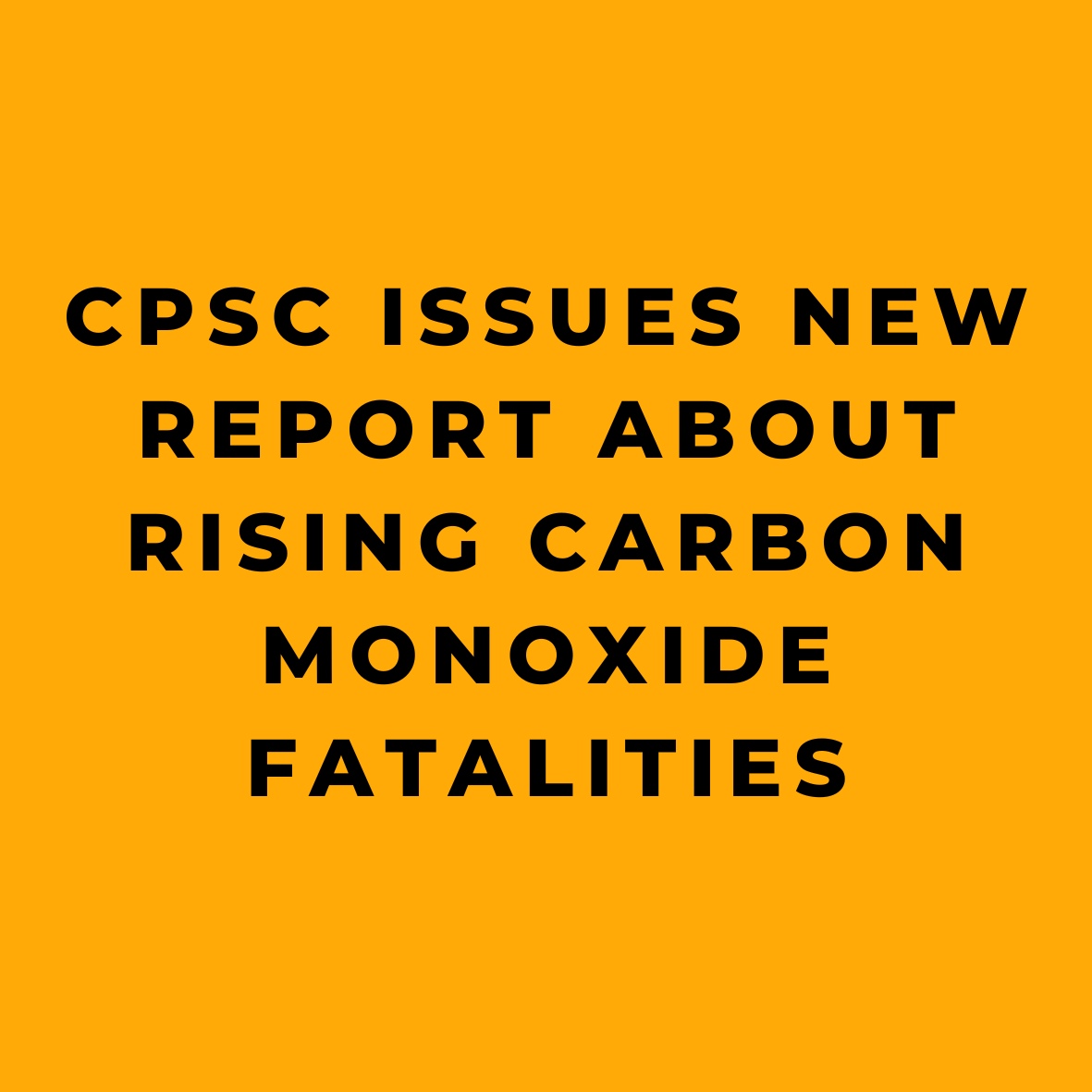A new report released by the U.S. Consumer Product Safety Commission (CPSC) highlights an alarming upward trend in non-fire carbon monoxide (CO) poisoning deaths. The report, titled Non-Fire Carbon Monoxide Deaths Associated with the Use of Consumer Products 2019 Annual Estimates, covers data from 2009 to 2019. In 2019, there were an estimated 250 consumer product-related CO deaths in the United States – more than any other year in the report.
Well, folks, it’s time to hunker down and have a serious chat about a silent and invisible killer lurking in our midst. According to a new report from the U.S. Consumer Product Safety Commission (CPSC), non-fire carbon monoxide (CO) poisoning deaths are on the rise, and it’s time we take notice. In 2019, a staggering 250 consumer product-related CO deaths occurred in the United States, making it the deadliest year covered in the report.
Now, let me tell you, CO is one sneaky menace. It’s colorless, odorless, and can knock you off your feet faster than a greased pig on a slip ‘n slide. Symptoms like nausea, dizziness, and weakness can quickly escalate to unconsciousness and even death. So, it’s crucial to get ahead of this lethal gas by following safety guidelines for portable generators and heating products, and ensuring your home is equipped with CO alarms.
Engine-Driven Tools (EDTs), such as generators, accounted for the largest percentage of non-fire CO poisoning deaths in 2019. Since 2009, portable generators alone have been associated with approximately 765 non-fire CO poisoning deaths, accounting for 40 percent of all CO deaths related to consumer products under CPSC’s jurisdiction.
Heating systems were the second leading cause of non-fire CO poisoning deaths in 2019, with an estimated 69 deaths (28%) associated with products in this category. Most CO deaths occur during the colder months of November, December, January, and February.
The CPSC urges consumers to take safety precautions to prevent CO poisoning:
Portable Generators:
- Use portable generators OUTSIDE ONLY, and place them at least 20 feet from the home with exhaust pointed away from any nearby buildings.
- NEVER operate a portable generator inside a home, garage, basement, crawlspace, or shed. Opening doors or windows will not provide enough ventilation to prevent the buildup of lethal levels of CO.
- Check that portable generators have been maintained properly, and read and follow the labels, instructions, and warnings on the generator and in the owner’s manual.
- Look for portable generators with a CO shut-off safety feature designed to shut off the generator automatically when high levels of CO are present around the generator. These models may be advertised as certified to the latest safety standards for portable generators—PGMA G300-2018 and UL 2201—which are estimated to reduce deaths from CO poisoning by 87% and 100%, respectively. UL 2201 certified models have reduced CO emissions in addition to the CO shut-off feature.
Heating Products:
- Have a professional inspect all fuel-burning heating products, including furnaces, boilers, fireplaces, wood stoves, water heaters, chimneys, flues, and vents each year. These and other heating products can cause CO poisoning if they are improperly installed, poorly maintained, have defective or blocked venting systems, or are misused.
- Clear snow away from the outside vents for fuel-burning appliances such as furnaces so that dangerous carbon monoxide does not build up in the house.
- “Never use charcoal grills or burn charcoal inside a garage, tent, vehicle, or other enclosed space. Burning charcoal releases CO, which can quickly reach dangerous levels and lead to carbon monoxide poisoning.”
- In addition, clear snow away from the outside vents for fuel-burning appliances such as furnaces to prevent dangerous levels of CO from building up in the house.
CO Alarms:
- Install CO alarms on every level of the home and outside sleeping areas.
- Alarms that are not battery-operated should have battery backup in case of a power outage. Interconnected alarms are best because, when one sounds, they all sound.
- Test the alarms every month to make sure they are working. Replace batteries at least once every year, or install CO alarms with sealed, 10-year batteries.
With more than half of all CO deaths occurring in the colder months of the year, it is essential for consumers to be vigilant and take the necessary precautions to protect themselves and their families from the dangers of CO poisoning.
Let’s all band together to keep our families and communities safe from the dangers of CO poisoning. By raising awareness, maintaining our fuel-burning appliances, and following safety measures, we can turn the tide on this deadly trend and protect those we love.
Resources:
https://www.cdc.gov/co/default.htm
Poster – Carbon Monoxide (CO) the Invisible Killer
Poster – Carbon Monoxide (CO) the Invisible Killer (Spanish)
Infographic – Portable Generator Carbon Monoxide Emissions vs Car Carbon Monoxide Emissions
CPSC PSA: One portable generator produces the same amount of carbon monoxide as hundreds of cars illustrates how gasoline-powered portable generators can create a risk of CO poisoning that can kill in minutes. The PSA is also available in Spanish.
Read more safety tips in our Carbon Monoxide Safety Center.
Individual Commissioners may have statements related to this topic. Please visit www.cpsc.gov/commissioners to search for statements related to this or other topics.
References:










